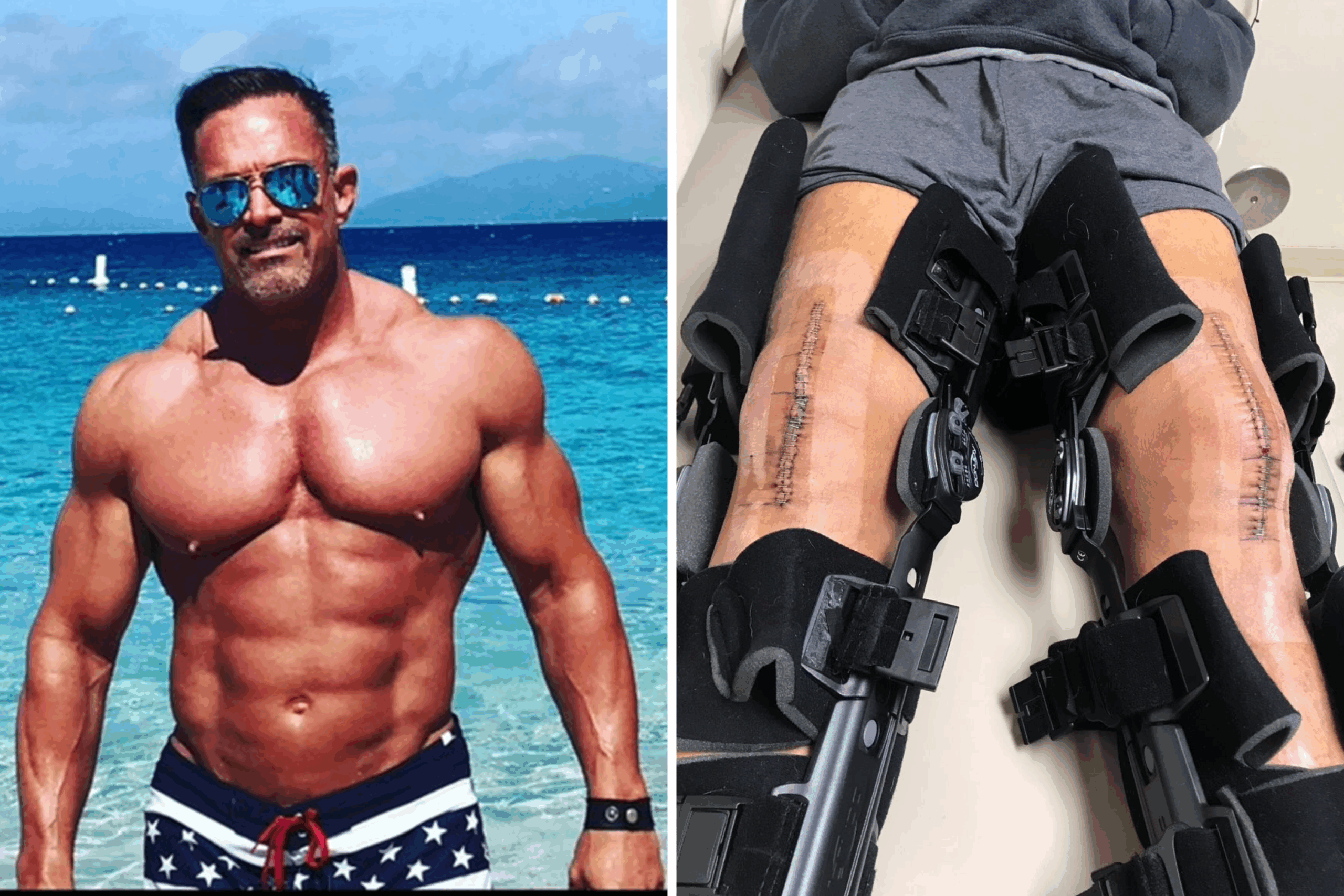
As a personal trainer with more than three decades of experience, I’ve done squats more times than I can count. It’s second nature—just part of the job.
On October 21, 2020, I was back in the gym in Chattanooga, Tennessee, trying to rebuild my career after semi-retiring and living in Costa Rica for two years. I’d just moved home and was focused on restarting my business. It was a cold day, I was running late, and like many gym-goers do from time to time, I rushed through my warm-up.
I had already done 135 pounds, then 225, and was working my way up to 275 pounds. I started my descent, came back up, adjusted my back for the next rep—and then everything went black.
When I came around, I was on the gym floor. I looked in the mirror and saw my spotter, white as a sheet. My legs from the knees down weren’t where they should’ve been. My first instinct was to try to wiggle my toes. I could still do that. But when I looked at my thighs, I saw two huge mounds under the skin about 10 inches above both knees. I knew exactly what had happened.
Darin Johnson
I had torn all three quadriceps muscles on both legs completely off the bone. It’s called a bilateral quadriceps tendon rupture, or a bilateral quad tear for short. The quadriceps muscles are the big muscles on the front of your thighs that help you straighten your knees and walk. In a tear like this, the tendons rip completely away from the kneecap, making it impossible to stand or walk without surgical repair.
The surgeon who took on my case had to unroll the muscles and reattach them to the bones. That image alone still gives me chills.
Recovery was awful. My legs were braced from hip to ankle to keep my knees from bending and tearing the surgical stitching. I was bedridden for four weeks, wearing those braces 24/7.
Try sleeping in them. I wouldn’t wish that on anyone.
A close friend offered me a bedroom in her home with her husband, and I needed help with everything, from bathing to getting on and off the toilet. Those early days were humbling. I couldn’t even get out of bed to use the bathroom on my own. A washrag bath was all I could manage for eight weeks.
After that, it was four to six weeks in a wheelchair. That’s also when I started going back to work. I didn’t have many clients at the time since I was just restarting my business, but a tribe of friends made it possible. They’d pick me up at 5 a.m., drive me to work, and at the gym, my coworkers would wheel me from station to station so I could coach my clients.
I would sit in that chair, often for hours between sessions, just waiting. It was mentally draining—needing that much help when I had always been the one helping others.
When I finally graduated from the wheelchair, I started rehab. First came range-of-motion therapy, just trying to get my knees to bend again. I walked stiffly, like Frankenstein, using the braces for support. Then, slowly, I moved into muscular rehab and impact therapy. My workout partners would lift me into machines so I could work my upper body. After a set, they’d lift me out and set me back in my chair.
The hardest part wasn’t just the physical pain—it was re-teaching myself how to walk. I had to rebuild the mind-muscle connection, step by step. I would get on a treadmill at the slowest speed and practice: heel down, knee bent, shift the weight, repeat. Every movement required full concentration.
Over time, the coordination came back. So did some confidence. I started walking on flat surfaces without braces, then added hills. Eventually, I began training my legs again with very light weights and low reps. Just teaching the muscles how to respond to impact again. That entire process took a full year.
The surgeon told me the chances of ever doing free-weight squats again were slim. But I wasn’t ready to accept that. I started sending him videos [of] me squatting the bar, then 95 pounds, then 135, then 225. He was just as excited as I was. Sixteen months after my injury, I finally felt normal walking again.
I still struggle with stairs and hills. I take my time. I’ve been humbled deeply. I now have a small taste of what it’s like to lose something we all take for granted—like walking—and have to fight like hell to get it back.
I’ve learned that every day is a gift, and I’ll always remember that when things get tough.
Do you have a unique experience or personal story to share? See our Reader Submissions Guide and then email the My Turn team at myturn@newsweek.com.
